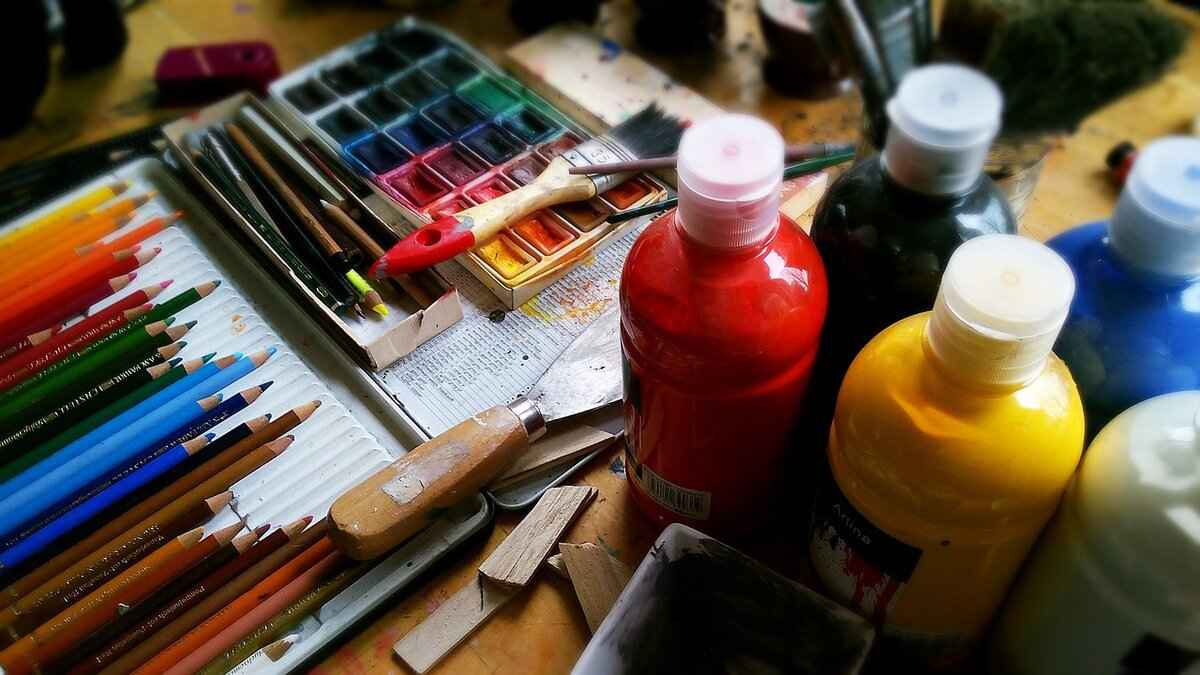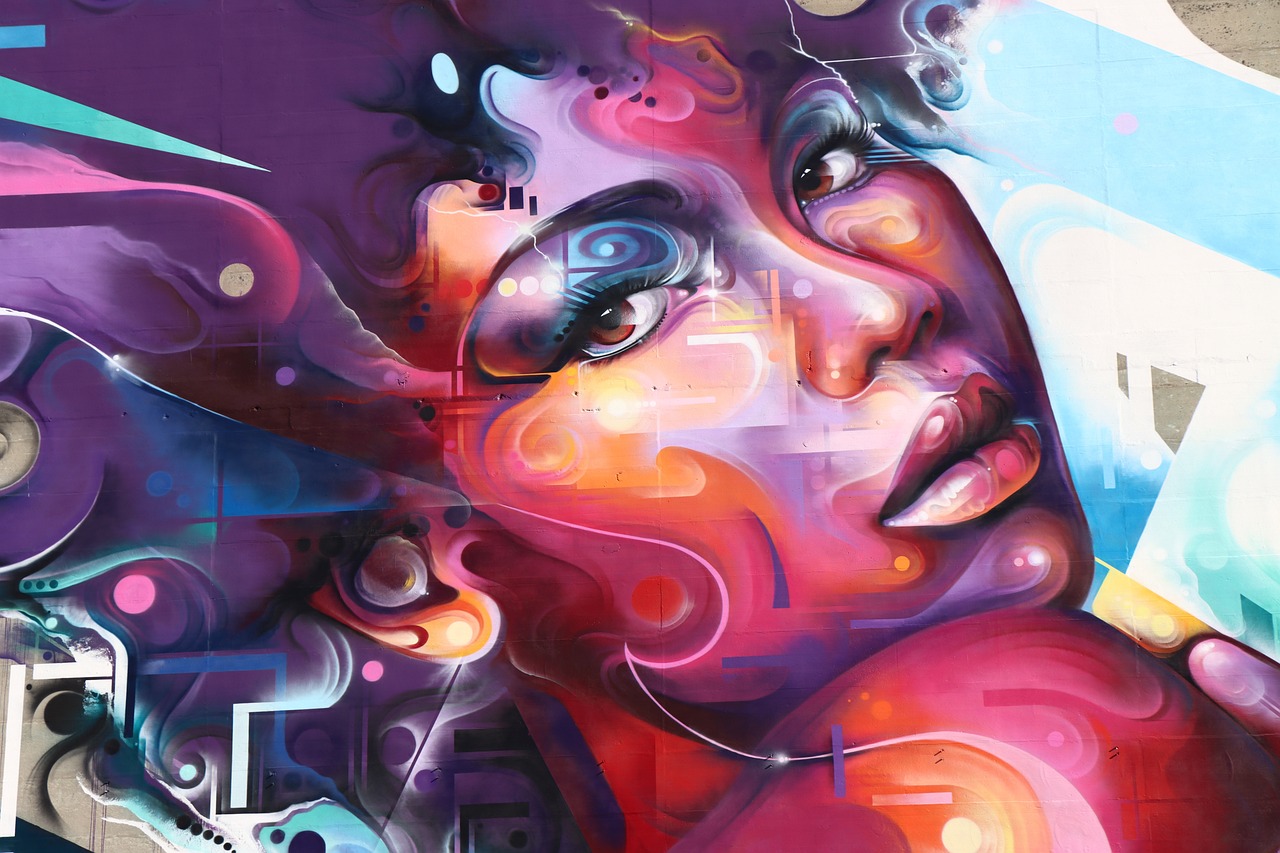Explore the rich heritage of Bengali art, focusing on the intricate designs of Alpana. This article delves into its history, significance, techniques, and cultural impact, providing a comprehensive overview of this unique art form.
What is Alpana?
Alpana is a traditional Bengali art form characterized by decorative floor and wall paintings. Typically created during festivals and special occasions, Alpana reflects the vibrant culture and traditions of Bengal. The origins of this art form can be traced back to ancient times, where it served as a medium for expressing joy and spirituality.
The Historical Roots of Bengali Art
Bengali art has a profound historical context, influenced by various cultural and social factors. From ancient sculptures to modern paintings, the evolution of art in Bengal showcases a rich tapestry of creativity, often mirroring the changing dynamics of society.
Influences on Bengali Art
- Religious Influences: Religious themes are prevalent in Bengali art, serving as a reflection of the community’s spiritual beliefs.
- Political and Social Influences: The art of Bengal has been shaped by political changes and social movements, influencing themes and styles.
Techniques Used in Alpana Designs
Alpana designs employ various techniques that contribute to their unique aesthetic. Artists often use natural materials, such as rice flour and colored powders, to create intricate patterns that are both beautiful and meaningful.
The Symbolism in Alpana Art
Alpana designs are rich in symbolism, often representing cultural beliefs and values. Common motifs include floral patterns, geometric shapes, and mythological figures, each carrying its own significance within Bengali culture.
The Role of Color in Alpana Designs
Color plays a crucial role in Alpana art. Different colors convey various emotional and cultural messages, enhancing the overall impact of the designs.
Alpana in Contemporary Art
Today, Alpana art continues to evolve, merging traditional techniques with modern influences. Contemporary artists are reinterpreting this age-old art form, creating unique fusions that resonate with today’s audience.
Conclusion: The Enduring Legacy of Bengali Art
Bengali art, particularly Alpana designs, holds a significant place in cultural heritage. Preserving this art form is vital for future generations, ensuring that the rich traditions and values of Bengali culture remain alive and relevant.

What is Alpana?
Alpana is a captivating traditional art form originating from Bengal, characterized by its intricate decorative designs painted on the floors and walls of homes. These artistic expressions are particularly prominent during festivals and special occasions, where they serve not only as decoration but also as a means of inviting prosperity and good fortune into the household.
The origins of Alpana can be traced back to ancient Bengal, where it was deeply intertwined with the region’s cultural and spiritual practices. Traditionally, Alpana designs are created using a mixture of rice flour and water, which forms a paste that is easy to manipulate into various shapes and patterns. The art form is often passed down through generations, with each family adding its unique touch to the designs.
In Bengali culture, Alpana is more than just an aesthetic pursuit; it holds significant cultural value. The act of creating Alpana is often a communal activity, bringing families and communities together. During festivals like Durga Puja and Pohela Boishakh (Bengali New Year), the vibrant patterns painted on the floors symbolize the arrival of deities and the celebration of new beginnings. The designs often incorporate motifs such as flowers, animals, and geometric shapes, each carrying its own meaning and significance.
Moreover, the practice of Alpana reflects the rich heritage of Bengali art, showcasing the creativity and craftsmanship of its practitioners. As society evolves, so does Alpana, with contemporary artists experimenting with modern themes while staying true to traditional techniques. This adaptability ensures that Alpana remains a vital part of Bengali cultural identity, bridging the past and present.
In conclusion, Alpana is not just an art form; it is a cultural expression that encapsulates the essence of Bengali life. Its rich history and significance in festivals make it an enduring symbol of community, spirituality, and creativity.

The Historical Roots of Bengali Art
Bengali art, a vibrant and diverse expression of culture, has a rich historical context that reflects the region’s intricate social and cultural tapestry. From the ancient times of the Maurya and Gupta empires to the modern day, the art of Bengal has evolved, influenced by various historical events, religious beliefs, and social movements.
In ancient Bengal, art was primarily religious in nature, often depicting deities and mythological narratives. The early sculptures and terracotta works from this period highlight the skill and creativity of artisans. As time progressed, the influence of Islamic culture during the medieval period introduced new artistic styles, which can be seen in the intricate calligraphy and architectural designs that emerged.
During the British colonial period, Bengali art underwent significant transformation. The introduction of Western artistic techniques led to the rise of the Bengal School of Art, which sought to blend traditional Indian themes with modern styles. This movement was pivotal in shaping the identity of Bengali art, as artists began to explore themes of nationalism and cultural identity.
In contemporary times, Bengali art continues to thrive, with artists drawing from both traditional practices and modern influences. The introduction of digital media has allowed for new forms of expression, while still paying homage to the rich heritage that defines Bengali art. Today, the art scene in Bengal is characterized by a blend of traditional techniques and innovative practices, showcasing the region’s ability to adapt and evolve.
In conclusion, the historical roots of Bengali art are deeply intertwined with the region’s cultural and social dynamics. Understanding this evolution not only enriches our appreciation of the art itself but also highlights the resilience and creativity of the Bengali people throughout history.
Influences on Bengali Art
Bengali art is a vibrant tapestry woven from diverse influences that reflect the region’s rich cultural heritage. Among the most significant factors shaping this artistic expression are religion, politics, and social movements. Each of these elements has contributed to the evolution of Bengali art, making it a unique representation of the community’s beliefs, struggles, and aspirations.
Religious influences are deeply ingrained in Bengali art, with many works serving as reflections of the spiritual and philosophical beliefs held by the community. From the intricate depictions of Hindu deities in traditional paintings to the serene representations of Buddhist motifs, religion has provided a rich source of inspiration for artists. Festivals such as Durga Puja and Pohela Boishakh often see a surge in artistic expression, as artists create elaborate decorations and artworks that celebrate these significant occasions.
Political influences have also left a profound mark on Bengali art. Throughout history, artists have used their work as a means of commentary and resistance against colonial rule, oppression, and social injustice. The Bengal Renaissance in the 19th century, for example, was a period where art became a vehicle for expressing nationalist sentiments and advocating for social reform. This era saw the emergence of new styles and themes that challenged traditional norms, paving the way for modern artistic practices.
Furthermore, social movements in Bengal, particularly those related to gender equality and cultural identity, have inspired artists to explore themes of empowerment and self-expression. The rise of feminist art in the late 20th century, for instance, has encouraged women artists to reclaim their narratives and challenge societal norms through their creations.
In summary, the influences on Bengali art are multifaceted, encompassing a blend of spiritual beliefs, political contexts, and social changes. These elements not only enrich the artistic landscape but also ensure that Bengali art remains a living, breathing reflection of its people’s journey through time.
Religious Influences
In the vibrant tapestry of Bengali art, religious themes emerge as a profound and enduring element, deeply woven into the cultural fabric of the community. The connection between art and spirituality is evident, as artists often draw inspiration from their faith, creating works that resonate with both the divine and the everyday life of the people.
The roots of this artistic expression can be traced back to ancient times, where the Hindu and Buddhist traditions played a crucial role in shaping artistic narratives. Temples adorned with intricate carvings and murals serve as a testament to the spiritual dedication of the artisans. These artworks not only depict deities and mythological stories but also reflect the values and beliefs that guide the community.
During festivals, the significance of religious themes becomes even more pronounced. Alpana, the traditional art form of decorative floor and wall paintings, often features motifs from Hindu mythology, symbolizing prosperity, fertility, and auspiciousness. The act of creating Alpana is considered a spiritual practice, where the artist invokes blessings through their creative expression.
Moreover, the influence of Islam in Bengal has also enriched the artistic landscape. The use of calligraphy and geometric patterns in Islamic art has found its place within the broader context of Bengali art, showcasing a unique blend of cultural heritage. This fusion not only highlights the region’s religious diversity but also emphasizes the shared values of peace and harmony.
As we explore the in Bengali art, it becomes clear that these themes serve as a bridge, connecting the spiritual with the temporal. Artists continue to explore and reinterpret these motifs, ensuring that the legacy of their faith remains alive in contemporary expressions. The ongoing dialogue between art and religion in Bengal is not just a reflection of the past, but a living narrative that continues to evolve, enriching the cultural identity of the community.
Political and Social Influences
The political and social influences on Bengali art are profound, reflecting the dynamic history and culture of the region. As Bengal has experienced various political upheavals and social movements, these events have significantly shaped the themes, styles, and techniques used in its art. This section delves into how these factors have interwoven with the artistic expressions of the Bengali people.
Throughout history, the political landscape of Bengal has undergone numerous transformations, from colonial rule to independence movements. Each political shift has inspired artists to respond through their work, often using art as a medium for protest or reflection. For instance, during the British colonial period, many artists began to incorporate themes of nationalism and identity into their artwork, symbolizing the struggle for independence and cultural preservation.
Social movements, particularly those aimed at empowerment and equality, have also played a crucial role in shaping Bengali art. The feminist movements, for example, have inspired female artists to challenge traditional norms and express their unique perspectives through their creations. This has led to a diversification of themes, where issues such as gender equality, social justice, and environmental concerns are visually articulated.
Moreover, the cultural renaissance in Bengal during the late 19th and early 20th centuries saw a flourishing of artistic expression that was deeply intertwined with social reform. Artists began to explore indigenous themes and techniques, reviving traditional practices while addressing contemporary issues. This blend of the old and new enriched the artistic landscape, making it a vibrant space for dialogue and innovation.
In conclusion, the interplay of political and social influences has been instrumental in the evolution of Bengali art. By reflecting the struggles, aspirations, and identities of its people, Bengali art continues to serve as a powerful commentary on the socio-political landscape, ensuring its relevance in both historical and contemporary contexts.
Techniques Used in Alpana Designs
Alpana designs are a beautiful and intricate form of traditional Bengali art, characterized by their unique patterns and cultural significance. The techniques employed in creating these designs are as diverse as the motifs themselves, showcasing the rich heritage of Bengali artistry. This section explores the various methods and tools that artisans use to craft these stunning works of art.
- Freehand Drawing: One of the most fundamental techniques in Alpana design is freehand drawing. Artists often create elaborate patterns directly on the surface using natural materials, allowing for a personal touch and spontaneity in their work.
- Stenciling: Stenciling is another popular method where templates are used to achieve uniformity in designs. This technique is particularly useful for creating repetitive motifs, ensuring consistency across larger surfaces.
- Rice Paste Application: Traditionally, Alpana designs are made using a mixture of rice flour and water, which is applied to the surface. This paste not only provides a textured look but also adheres well to various surfaces, enhancing the durability of the artwork.
- Color Application: The use of vibrant colors is crucial in Alpana designs. Artists often use natural dyes derived from plants, flowers, and minerals to create a rich palette. The application of color can be done using brushes or by hand, adding depth and vibrancy to the designs.
- Layering Techniques: Many artisans employ layering techniques to create depth in their designs. By applying multiple layers of rice paste or color, they can achieve a three-dimensional effect that makes the patterns come alive.
- Symbolic Motifs: The choice of motifs is integral to Alpana art. Common symbols such as lotus flowers, fish, and geometric shapes are often used, each carrying its own cultural significance. The careful selection and placement of these motifs contribute to the overall narrative of the artwork.
In conclusion, the techniques used in Alpana designs are a testament to the skill and creativity of Bengali artisans. By combining traditional methods with innovative approaches, they continue to keep this art form alive, ensuring its relevance in contemporary culture.

The Symbolism in Alpana Art
Alpana art is not just a visual treat; it is a profound expression of Bengali culture and its rich tapestry of beliefs and values. Each design and motif in Alpana carries a deep meaning, often rooted in tradition and spirituality. This section explores the intricate symbolism behind common motifs and patterns found in Alpana art, shedding light on their cultural significance.
At the heart of Alpana designs are various motifs that symbolize different aspects of life and nature. For instance, the lotus is a prevalent motif that represents purity and enlightenment, often associated with spiritual awakening. Similarly, fish motifs symbolize prosperity and abundance, reflecting the agrarian roots of Bengali society. Each of these symbols is not randomly chosen; they are imbued with meanings that resonate with the community’s values and beliefs.
Moreover, the use of geometric patterns in Alpana art signifies harmony and balance in life. These patterns often mimic the natural world, representing the interconnectedness of all living beings. The repetition of certain shapes and designs serves as a reminder of the cyclical nature of life, reinforcing the idea of renewal and continuity.
In addition to specific motifs, the color palette used in Alpana designs also carries symbolic weight. For example, red often signifies joy and celebration, making it a popular choice during festivals, while green symbolizes fertility and growth. The careful selection of colors not only enhances the visual appeal but also conveys deeper emotional messages, enriching the viewer’s experience.
In conclusion, the symbolism in Alpana art is a testament to the cultural heritage of Bengal. Each motif and color choice reflects the beliefs, values, and aspirations of the community, making Alpana not just an art form, but a vital part of Bengali identity. Understanding these symbols allows us to appreciate the depth and richness of this traditional art form, ensuring its relevance for generations to come.
Common Motifs in Alpana
designs are not just decorative elements; they are rich in cultural significance and storytelling. Each motif carries a unique meaning, deeply rooted in Bengali traditions and beliefs. Understanding these motifs provides insight into the vibrant tapestry of Bengali culture.
Among the most prevalent motifs in Alpana art are:
- Lotus: A symbol of purity and beauty, the lotus represents spiritual awakening and divine love. In Bengali culture, it is often associated with the goddess Lakshmi, the deity of wealth and prosperity.
- Fish: Fish motifs symbolize fertility and abundance. In Bengali folklore, the fish is seen as a harbinger of good luck and prosperity, making it a popular choice during auspicious occasions.
- Peacock: The peacock represents grace and beauty. It is often depicted in Alpana designs to signify joy and celebration, reflecting the festive spirit of Bengali life.
- Conch Shell: The conch shell, or ‘shankha’, is a sacred symbol in Hinduism, representing the sound of the universe. Its presence in Alpana art is believed to invoke auspiciousness and ward off negativity.
- Tree of Life: This motif symbolizes interconnectedness and the cycle of life. It reflects the importance of nature and the environment in Bengali culture, emphasizing harmony and balance.
Each of these motifs is often interwoven with intricate patterns, creating a visual narrative that speaks to the viewer. The use of symmetry and repetition in Alpana designs enhances their aesthetic appeal, while also reinforcing the significance of the motifs themselves.
In summary, the motifs found in Alpana designs are more than mere decorations; they are a reflection of Bengali identity, culture, and spirituality. Understanding these symbols allows for a deeper appreciation of this traditional art form and its role in celebrating life’s important moments.
The Role of Color in Alpana Designs
Color is not merely an aesthetic choice in Alpana art; it serves as a powerful medium for expressing cultural identity and emotional depth. Each hue carries its own significance, contributing to the overall narrative of the artwork. This section explores the profound impact of color selections in Alpana designs, shedding light on how they influence perceptions and experiences.
Traditionally, Alpana art employs a vibrant palette, often featuring colors like red, yellow, green, and blue. Each of these colors holds specific meanings:
- Red: Symbolizes love and passion, often used in festive decorations.
- Yellow: Represents joy and celebration, frequently seen during auspicious occasions.
- Green: Signifies growth and prosperity, embodying the essence of nature.
- Blue: Evokes feelings of peace and tranquility, often used in spiritual contexts.
The choice of colors in Alpana is not arbitrary; it reflects the cultural beliefs and emotional states of the community. For instance, during Durga Puja, the use of vibrant colors is intended to invoke a sense of festivity and divinity. In contrast, more subdued tones might be used during somber occasions, illustrating the art’s versatility.
Furthermore, the interplay of colors can create a dynamic visual experience, enhancing the overall impact of the design. Artists often experiment with complementary and contrasting colors to draw attention to specific motifs, thereby enriching the storytelling aspect of the artwork.
In conclusion, the role of color in Alpana designs is multifaceted, intertwining with cultural narratives and emotional expressions. As this art form continues to evolve, understanding the significance of color choices remains essential for appreciating the depth and richness of Alpana art.

Alpana in Contemporary Art
The evolution of Alpana art is a fascinating journey that showcases the seamless integration of traditional techniques with modern influences. Today, artists are not only preserving this age-old art form but also reinterpreting it to resonate with contemporary audiences. This section delves into the innovative ways in which Alpana is being transformed, reflecting both cultural heritage and modern aesthetics.
Contemporary artists are exploring a variety of mediums to express Alpana designs. While traditional Alpana is often created with rice paste on the floors and walls during festivals, modern interpretations may include digital art, canvas paintings, and even textile designs. This fusion allows artists to reach a broader audience and incorporate Alpana into everyday life.
One notable trend is the collaboration between traditional artisans and modern designers. This partnership brings fresh perspectives to Alpana, allowing for the incorporation of contemporary themes while maintaining the essence of traditional motifs. For instance, artists may blend Alpana patterns with modern graphic design elements, creating a unique visual language that appeals to younger generations.
Additionally, social media platforms have played a significant role in promoting Alpana art. Artists share their work online, gaining recognition and inspiring others to engage with this traditional craft. Through platforms like Instagram and Pinterest, Alpana designs are being showcased globally, further enhancing their relevance in contemporary art discussions.
Moreover, the use of color in modern Alpana art has evolved. While traditional designs often utilize earthy tones and natural pigments, contemporary artists experiment with vibrant colors and unconventional palettes, reflecting current trends in the art world.
In summary, the reinterpretation of Alpana art in contemporary contexts highlights the dynamic nature of cultural expressions. As artists continue to innovate and merge traditional techniques with modern influences, Alpana remains a vital part of Bengal’s artistic landscape, ensuring its legacy for future generations.
Fusion with Modern Art Forms
In recent years, the art world has witnessed a fascinating trend where traditional forms are being reimagined and blended with contemporary styles. In the realm of Bengali art, Alpana has emerged as a prime candidate for such fusion. This unique integration not only revitalizes the traditional art form but also opens new avenues for expression and creativity.
Contemporary artists are increasingly incorporating Alpana designs into various mediums, including installation art, digital art, and even fashion. For instance, some artists have created large-scale installations that feature Alpana motifs, transforming public spaces into vibrant showcases of Bengali culture. These installations often invite viewers to engage with the art on a deeper level, fostering a connection between the audience and the cultural heritage represented.
Moreover, the rise of digital platforms has allowed artists to experiment with Alpana in innovative ways. Digital art that incorporates traditional Alpana patterns is becoming popular, as it blends age-old techniques with modern technology. This approach not only preserves the essence of Alpana but also makes it accessible to a global audience, showcasing the beauty of Bengali art beyond its geographical confines.
Another notable example is the fusion of Alpana with contemporary fashion. Designers are drawing inspiration from Alpana designs to create clothing and accessories that celebrate Bengali culture while appealing to modern aesthetics. This cross-pollination of art and fashion not only highlights the versatility of Alpana but also emphasizes its relevance in today’s world.
The implications of these integrations are profound. They challenge the notion of what constitutes traditional art, suggesting that cultural expressions can evolve while still honoring their roots. As contemporary artists continue to explore the fusion of Alpana with other art forms, they contribute to a dynamic dialogue about identity, heritage, and the future of Bengali art.
In conclusion, the blending of Alpana with modern art forms represents a significant movement within the Bengali art scene. It not only breathes new life into a cherished tradition but also encourages a broader appreciation for the intricate beauty of this art form in contemporary contexts.
Preservation Efforts for Alpana Art
are essential to ensure that this traditional Bengali art form continues to thrive in the modern world. Various initiatives and organizations are dedicated to safeguarding Alpana, recognizing its cultural significance and the need for its promotion among younger generations.
One of the most notable organizations involved in these efforts is the Bengal Heritage Foundation, which actively works to document and promote traditional art forms, including Alpana. They conduct workshops and training sessions for artists and enthusiasts, ensuring that the techniques and traditions are passed down effectively. Additionally, these workshops often engage local communities, fostering a sense of pride and ownership over their cultural heritage.
Another key initiative is the collaboration between local artists and educational institutions. Schools and colleges have started incorporating Alpana art into their curricula, allowing students to learn about its history and techniques. This approach not only preserves the art form but also encourages creativity and appreciation among the youth. Through exhibitions and competitions, students get the chance to showcase their work, further promoting Alpana art in contemporary settings.
Moreover, social media platforms have become a powerful tool for promoting Alpana art. Artists are using platforms like Instagram and Facebook to share their creations, reach a wider audience, and connect with art lovers globally. This digital presence has helped in reviving interest in traditional art forms, making it accessible to a new generation.
In conclusion, the efforts to preserve and promote Alpana art are multifaceted, involving community engagement, educational initiatives, and the use of modern technology. By fostering a deeper understanding and appreciation of this exquisite art form, these initiatives ensure that Alpana remains a vibrant part of Bengali culture for years to come.

Conclusion: The Enduring Legacy of Bengali Art
Bengali art, particularly the intricate Alpana designs, represents a vital aspect of the cultural heritage of Bengal. These decorative art forms are not merely aesthetic; they embody the traditions, beliefs, and values of the Bengali people. As we delve into the significance of this art form, it becomes clear that preserving Alpana is essential for future generations, ensuring that the rich cultural tapestry of Bengal continues to thrive.
Alpana, traditionally created during festivals and special occasions, serves as a visual narrative of the Bengali way of life. The designs often depict nature, spirituality, and social themes, reflecting the community’s connection to their environment and heritage. This art form has evolved over centuries, influenced by various historical, social, and religious factors, yet it retains its unique identity.
In recent years, the relevance of Alpana designs has been reaffirmed in modern society. Contemporary artists are reinterpreting these traditional motifs, blending them with modern techniques and styles. This fusion not only revitalizes the art form but also introduces it to a broader audience, ensuring that it remains a living tradition rather than a relic of the past.
Preservation efforts are crucial in this context. Numerous organizations are dedicated to promoting and safeguarding Alpana art, conducting workshops, exhibitions, and educational programs to raise awareness about its significance. By engaging younger generations and encouraging them to participate in this art form, we can foster a deeper appreciation and understanding of Bengali culture.
In conclusion, the enduring legacy of Bengali art, especially Alpana designs, is a testament to the resilience and creativity of the Bengali people. As we look to the future, it is essential to continue celebrating and preserving this art form, ensuring that it remains a vibrant part of our cultural identity for generations to come.
Frequently Asked Questions
- What is the significance of Alpana in Bengali culture?
Alpana holds a special place in Bengali culture as it represents joy and celebration. These intricate designs are often created during festivals and special occasions, symbolizing prosperity and happiness. It’s like painting a canvas of life on the floors and walls, where each stroke tells a story of tradition and community.
- How are Alpana designs created?
Creating Alpana designs involves using rice paste or colored powders to craft beautiful patterns. Artists typically use their hands or simple tools to draw these intricate motifs. Think of it as a dance of creativity, where each design flows seamlessly into the next, showcasing the artist’s skill and cultural heritage.
- What are some common motifs found in Alpana art?
Common motifs in Alpana art include flowers, fish, and geometric patterns, each carrying its own cultural significance. For instance, fish symbolize abundance and fertility, while floral designs represent beauty and growth. It’s like a visual language that speaks to the heart of Bengali traditions.
- Is Alpana art still relevant today?
Absolutely! Alpana art is experiencing a renaissance as contemporary artists blend traditional techniques with modern influences. This fusion creates fresh expressions of cultural identity, making Alpana as relevant today as it was centuries ago. It’s like breathing new life into an age-old tradition!
- How can I learn more about creating Alpana designs?
Many workshops and online courses are available for those interested in learning Alpana art. Joining local art communities or cultural organizations can also provide hands-on experience and guidance. It’s a fantastic way to connect with your roots and unleash your creativity!














